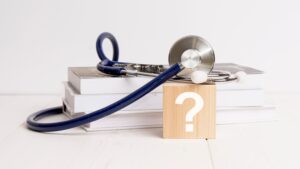
There is no cure for locked in syndrome, and most treatments focus on preventing further issues — bedsores and pneumonia, for example — and improving quality of life. Most people who suffer from locked in syndrome never recover significant motor function.
There have been rare cases of improvement, but it is hard to know how frequently this occurs since the condition is most likely underreported and therefore its true prevalence is unknown.
Understanding Locked In Syndrome
While there is no treatment or cure for locked in syndrome, there are many ways doctors and therapists can help improve the quality of life for someone with the condition. Locked in syndrome occurs when there is an injury to the parts of the brain that control motor function and autonomic functions. This may happen because of a traumatic brain injury, stroke, poisoning, or disease.
Locked in syndrome typically involves:
- Loss of motor function, causing quadriplegia
- Inability to communicate verbally
- Full cognitive function and awareness
Improving Quality of Life for Those With Locked In Syndrome
While quality of life is an obvious concern for those with locked in syndrome and their families, technology allows them to live much better lives today than in the past. Before the widespread use of electroencephalography (EEG), many people with locked in syndrome likely died because doctors did not recognize they continued to have normal brain activity. Today, medical professionals can use EEG alongside neurological testing to diagnose locked in syndrome.
Additionally, doctors and therapists can help many families with equipment, devices, and training to help them keep their loved one at home. Thanks to technology, they can also get out of bed and communicate with the outside world. Some useful equipment for those with locked in syndrome includes:
- Customized power wheelchairs
- Lift systems
- Smaller ventilators and other respiratory aids
- Eye gaze devices
- Brain-computer interfaces
While there is no standard treatment for those with locked in syndrome, preventing secondary infections is always a concern. This is the best way to ensure they live a long, pain-free life. Devices like hospital beds and mattresses that reduce the risk of bedsores can make a significant difference in both quality of life and health.
Pursuing Compensation After a Locked In Syndrome Diagnosis
Some people may be eligible to take legal action to recover damages following a locked in diagnosis. This is most commonly possible if the condition occurred because of a traumatic brain injury or medical malpractice. Let the legal team from Newsome | Melton review your family member’s case for free.
We may be able to help you pursue compensation for your family’s expenses and losses on your loved one’s behalf. This could include:
- Medical treatment
- Ongoing and future care costs
- Diminished earning capacity
- Out-of-pocket costs
- Pain and suffering
- Mental anguish
Call the Newsome | Melton team today at (800) 917-5888 for your free initial consultation.
